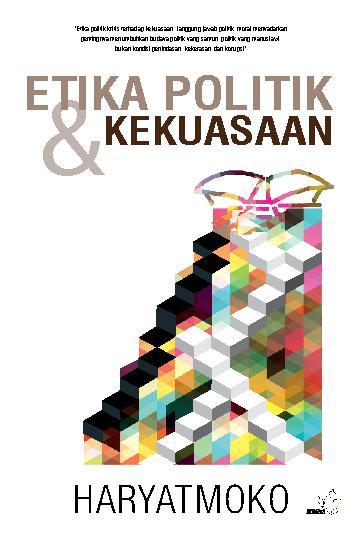

However, the abuse of the budget of corruption still occurs in the management of this budget Item Type: Budget management in the reform era kenirja using structure-based budget that aims to improve the performance of government with good governance that requires the effectiveness, efficiency, transparency, and accountability in its management.

Financial management practices of the country has made since the time of Prophet Muhammad are used for development purposes in the public welfare. Budget management of the state shows the government's role in regulating the sources of revenue and public expenditure. This study used a qualitative paradigm methods and methods vestehen history. However, government policy as outlined in the budget form precisely the opposite direction to the proper role of government welfare for the community.
 Ĝase studies on climate change, SDGs and peace in India conflicts in Kenya, Nigeria, South Sudan, Turkey, Brazil and Mexico Roma in Hungary the refugee crisis in Bangladesh peace action in Indonesia and India/Pakistan and peace education in Nepal.The policy of promoting development in the reform era of human development paradigm that puts people as actors and placing local economic development as a vehicle for community welfare. New theoretical perspectives by senior and junior scholars from Europe and Latin America on peace ecology, transformative peace, peaceful societies, and Gandhi’s non-violence policy. Innovative case studies by peace researchers on decolonising conflicts, security, peace, gender, environment and development in the Anthropocene, the new epoch of earth and human history. Ĝontributions from two pioneers of global peace research:a foreword by Johan Galtung from Norway and a preface by Betty Reardon from the United States. Peer-reviewed texts prepared for the 27th Conference of the International Peace Research Association (IPRA) in 2018 in Ahmedabad in India. Part IV assesses SDGs and peace in India, peace education in Nepal, and infrastructure-based development and peace in West Papua. Part III analyses norms of peacekeeping, violent non-state actors in Brazil, the art of peace in Mexico, grass-roots post-conflict peacebuilding in Sulawesi, hydrodiplomacyin the Indus River Basin, the Rohingya refugee crisis, and transitional justice. Part II discusses urban climate change, climate rituals, conflicts in Kenya, the sexual abuse of girls, farmer-herder conflicts in Nigeria, wartime sexual violence facing refugees, the traditional conflict and peacemakingprocess of Kurdish tribes, Hindustani family shame, and communication with Roma. Part I deals with peace ecology, transformative peace, peaceful societies, Gandhi’s non-violent policy and disobedient peace. Four parts cover I) peace research epistemology II) conflicts, families and vulnerable people III) peacekeeping, peacebuilding and transitional justice and IV) peace and education. In this book 25 authors from the Global South (19) and the Global North (6) address conflicts, security, peace, gender, environment and development.
Ĝase studies on climate change, SDGs and peace in India conflicts in Kenya, Nigeria, South Sudan, Turkey, Brazil and Mexico Roma in Hungary the refugee crisis in Bangladesh peace action in Indonesia and India/Pakistan and peace education in Nepal.The policy of promoting development in the reform era of human development paradigm that puts people as actors and placing local economic development as a vehicle for community welfare. New theoretical perspectives by senior and junior scholars from Europe and Latin America on peace ecology, transformative peace, peaceful societies, and Gandhi’s non-violence policy. Innovative case studies by peace researchers on decolonising conflicts, security, peace, gender, environment and development in the Anthropocene, the new epoch of earth and human history. Ĝontributions from two pioneers of global peace research:a foreword by Johan Galtung from Norway and a preface by Betty Reardon from the United States. Peer-reviewed texts prepared for the 27th Conference of the International Peace Research Association (IPRA) in 2018 in Ahmedabad in India. Part IV assesses SDGs and peace in India, peace education in Nepal, and infrastructure-based development and peace in West Papua. Part III analyses norms of peacekeeping, violent non-state actors in Brazil, the art of peace in Mexico, grass-roots post-conflict peacebuilding in Sulawesi, hydrodiplomacyin the Indus River Basin, the Rohingya refugee crisis, and transitional justice. Part II discusses urban climate change, climate rituals, conflicts in Kenya, the sexual abuse of girls, farmer-herder conflicts in Nigeria, wartime sexual violence facing refugees, the traditional conflict and peacemakingprocess of Kurdish tribes, Hindustani family shame, and communication with Roma. Part I deals with peace ecology, transformative peace, peaceful societies, Gandhi’s non-violent policy and disobedient peace. Four parts cover I) peace research epistemology II) conflicts, families and vulnerable people III) peacekeeping, peacebuilding and transitional justice and IV) peace and education. In this book 25 authors from the Global South (19) and the Global North (6) address conflicts, security, peace, gender, environment and development.







 0 kommentar(er)
0 kommentar(er)
